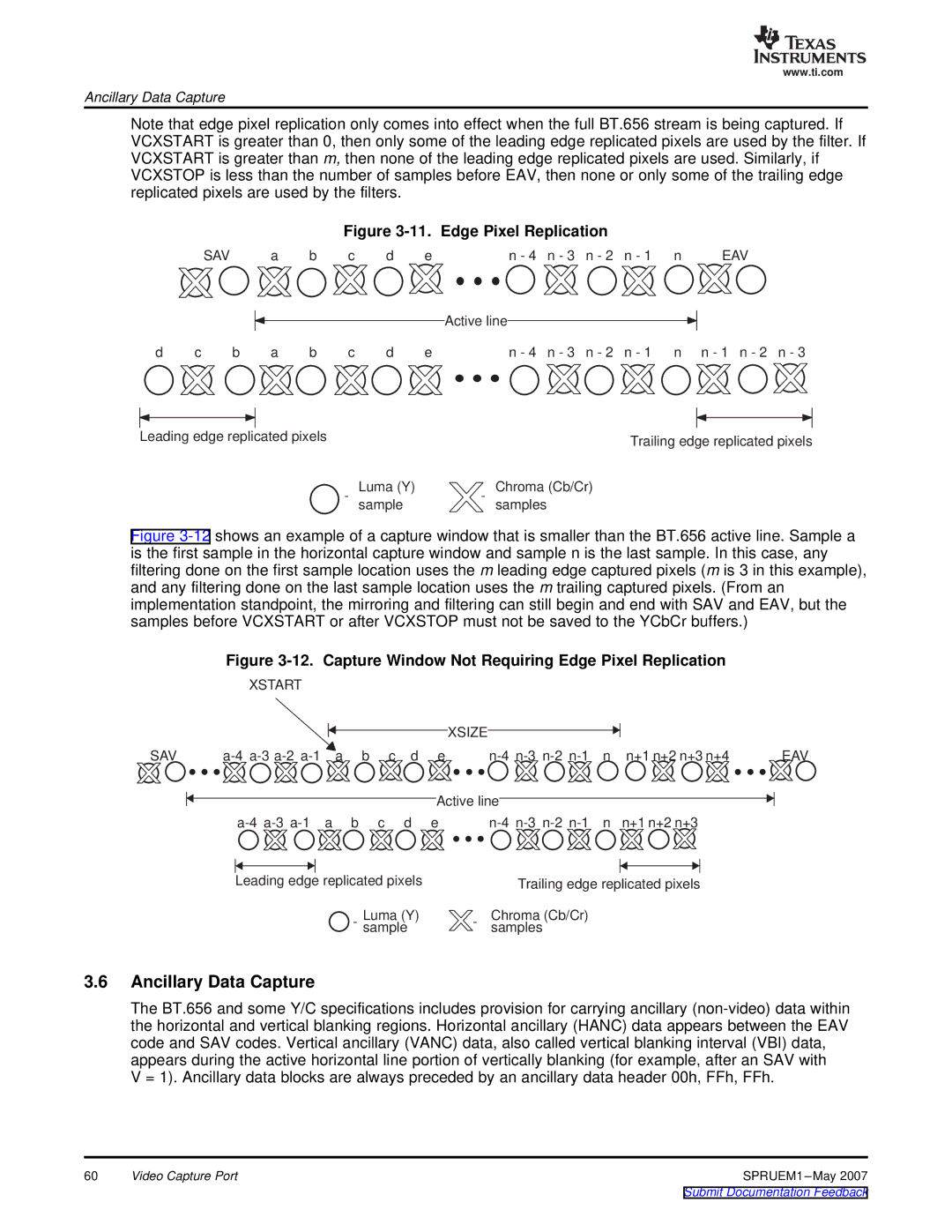
www.ti.com
Ancillary Data Capture
Note that edge pixel replication only comes into effect when the full BT.656 stream is being captured. If VCXSTART is greater than 0, then only some of the leading edge replicated pixels are used by the filter. If VCXSTART is greater than m, then none of the leading edge replicated pixels are used. Similarly, if VCXSTOP is less than the number of samples before EAV, then none or only some of the trailing edge replicated pixels are used by the filters.
Figure 3-11. Edge Pixel Replication
| SAV |
| a | b | c | d | e | n - 4 | n - 3 | n - 2 | n - 1 | n | EAV |
|
|
|
|
|
|
|
| Active line |
|
|
|
|
|
d | c | b | a | b | c | d | e | n - 4 | n - 3 | n - 2 | n - 1 | n | n - 1 n - 2 n - 3 |
Leading edge replicated pixels |
|
| Trailing edge replicated pixels |
|
|
| |
- | Luma (Y) | - | Chroma (Cb/Cr) |
sample | samples |
Figure 3-12 shows an example of a capture window that is smaller than the BT.656 active line. Sample a is the first sample in the horizontal capture window and sample n is the last sample. In this case, any filtering done on the first sample location uses the m leading edge captured pixels (m is 3 in this example), and any filtering done on the last sample location uses the m trailing captured pixels. (From an implementation standpoint, the mirroring and filtering can still begin and end with SAV and EAV, but the samples before VCXSTART or after VCXSTOP must not be saved to the YCbCr buffers.)
Figure 3-12. Capture Window Not Requiring Edge Pixel Replication
| XSTART |
|
|
|
|
|
|
|
|
|
|
|
|
|
|
|
| XSIZE |
|
|
|
|
|
|
|
SAV | a | b | c d | e | n | n+1 n+2 n+3 n+4 | EAV | |||||
|
|
|
|
| Active line |
|
|
|
|
|
| |
| b | c | d | e | n | n+1 n+2 n+3 |
| |||||
| Leading edge replicated pixels |
|
| Trailing edge replicated pixels |
| |||||||
|
| - | Luma (Y) | - | Chroma (Cb/Cr) |
|
|
| ||||
|
| sample | samples |
|
|
|
| |||||
3.6Ancillary Data Capture
The BT.656 and some Y/C specifications includes provision for carrying ancillary
V = 1). Ancillary data blocks are always preceded by an ancillary data header 00h, FFh, FFh.
60 | Video Capture Port | SPRUEM1 |
